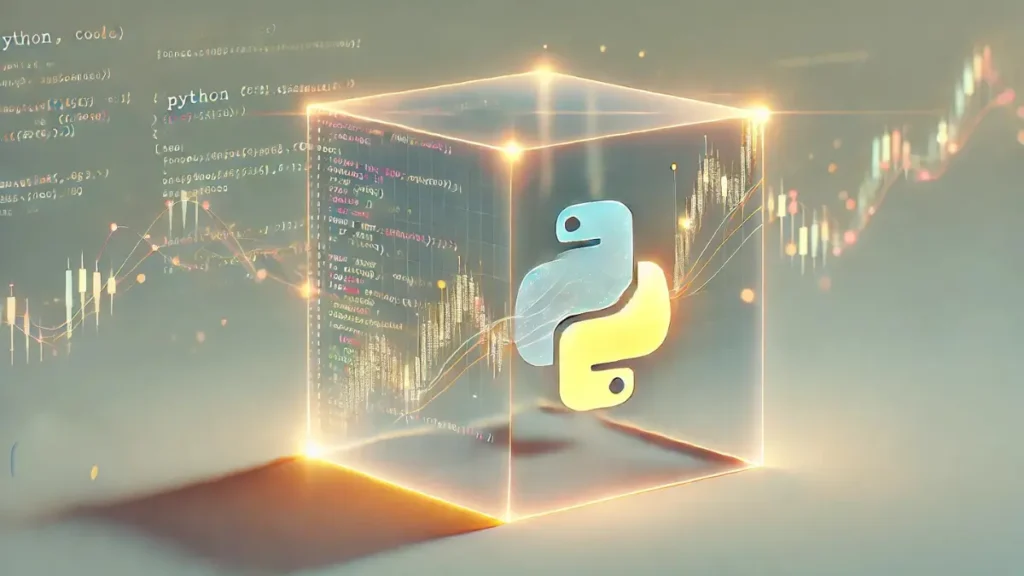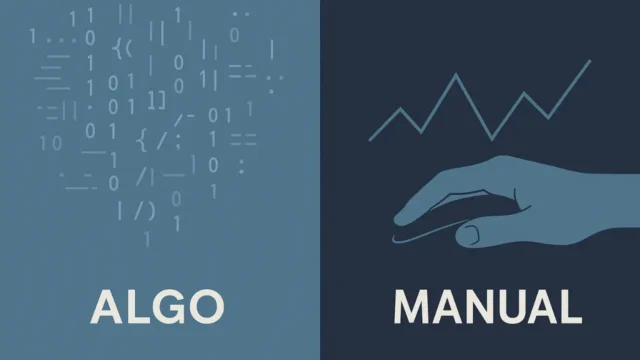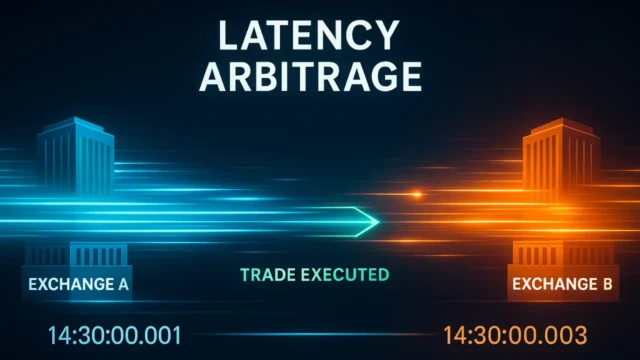Follow Us
5 Best Programming Languages for Algorithmic Trading

Table of Contents
Best Programming Languages for Algorithmic Trading: Choose Smart, Trade Smarter
Algorithmic trading isn’t some exclusive club reserved for wealthy geniuses anymore.
Today, it’s your game to play, if you have got a computer, a trading account, and the skills to write a few lines of code.
But here’s the catch: not all programming languages are created equal.
Choosing the right one can be the difference between a strategy that hums along smoothly like a well-oiled machine & one that crashes harder than a poorly timed market trade.
Python, C++, Java, R, each has its strengths & weaknesses. The trick is figuring out which one fits your goals, trading style, and level of coding experience.
Why Your Choice of Language Matters
Imagine this: You’ve spent weeks crafting the perfect algorithmic trading strategy, only to watch it stumble because your programming language couldn’t keep up with the speed of execution, lacked essential libraries or didn’t integrate with your broker’s API.
Frustrating, right? That’s why your choice of programming language is the foundation of your algo-trading success.
The Pain Points New Traders Face
Most beginners fall into one of two traps:
- They pick a language that’s either too advanced for their current skill level, leaving them frustrated & stuck.
- They go with an easy-to-learn language, only to discover it lacks the power or integration capabilities needed for their trading platform.
You might think, “I will just learn the most popular one.”
But truth is you need to choose your language based on your needs!
Here’s how to find language based on your needs!
Before diving headfirst into coding, ask yourself these questions:
- Am I focused on high-frequency trading or data-heavy strategies?
- Do I need something beginner-friendly, or am I comfortable with steep learning curves?
- Does my broker’s platform support the language I’m learning?
By clarifying your goals upfront, you can choose a language that aligns with your needs, saving time, money, and endless headaches.
Criteria for Choosing the Right Language
1. Speed & Efficiency
In algo trading, especially high-frequency trading (HFT), speed is king.
Imagine your algorithm identifying a market opportunity, but by the time your trade executes, the price has already moved.
That’s the danger of using a slow language.
2. Ease of Learning
If you’re new to coding, diving into a complex language can leave you overwhelmed & ready to quit before you even start.
A user-friendly language is key to building confidence & momentum.
3. Library Support
Why reinvent the wheel when there are libraries that can handle everything from financial modeling to machine learning?
A language with robust library support allows you to focus on strategy instead of coding every function from scratch.
4. Community & Resources
No matter how good you are, you’ll eventually need help-whether it’s debugging code or optimizing your algorithm.
A language with a strong community and plenty of resources can save you hours of frustration.
5. Integration
Your algorithm needs to communicate with a broker’s API to retrieve market data and execute trades. Without proper integration, even the best code is useless.
Quick Checklist: Is Your Language a Good Fit?
Ask yourself these questions:
- Is it fast enough for my trading strategy?
- Can I learn it quickly, or will I spend months stuck on basics?
- Does it offer libraries to simplify my work?
- Is there a strong community to help me when I’m stuck?
- Will it integrate seamlessly with my broker’s platform?
Top 5 Programming Languages for Algorithmic Trading
Python
If you are new to algorithmic trading, or even programming in general, Python is your best friend.
It’s simple, versatile, and has an almost cult-like following among traders & developers alike.
Why Python is the first-choice for many:
Python shines because of its simplicity & robust ecosystem.
Its clean, readable syntax means you spend less time wrestling with code and more time focusing on your trading strategies.
Plus, it’s packed with libraries designed specifically for financial data analysis, visualization, and algorithmic trading.
- Pandas: Handles complex data manipulation like a breeze.
- NumPy: Powers advanced mathematical operations essential for backtesting.
- Matplotlib: Visualizes trends and trading signals with stunning clarity.
- QuantConnect & Zipline: Two powerhouse frameworks that streamline backtesting & deploying your strategies.
Python also plays well with others, it integrates seamlessly with APIs for brokers.
Limitations:
Of course, Python isn’t perfect. Its biggest downside is speed. Unlike C++, Python isn’t compiled, so it’s slower.
If you are running high-frequency trading (HFT) strategies where every microsecond matters, Python might not keep up.
However, for most traders, this trade-off is negligible.
Useful tip:
Pair Python with Jupyter Notebook to supercharge your workflow. Jupyter allows you to test code, visualize data, and document your process in one place.
C++
If Python is the trusty all-rounder, C++ is the Formula 1 car of programming languages, blazing fast, precise, and built for traders who treat speed like their lifeline.
But don’t let its power fool you: C++ demands skill, patience, and a serious commitment to learning.
Why C++ is at forefront for HFT’s:
C++ thrives on speed. It’s a compiled language, meaning your code translates directly into machine instructions, making it lightning-fast.
This makes C++ the gold standard for high-frequency trading (HFT), where every microsecond matters.
Beyond raw speed, C++ also gives you unparalleled control over system resources, like memory & processing power.
This allows you to fine-tune your algorithm for maximum efficiency, critical when you’re trading at the speed of light.
Ideal For:
- Advanced Developers: C++ isn’t beginner-friendly, but if you know your way around code, it offers unmatched precision & optimization.
- Latency-Sensitive Strategies: If your trading strategy relies on millisecond-level timing, think HFT or scalping, C++ is your go-to.
It ensures your trades execute faster than the competition.
Limitations:
C++ isn’t for the faint of heart. Its steep learning curve can intimidate even seasoned programmers.
Writing clean, efficient code in C++ takes time, and debugging can be a headache if you’re not meticulous.
Moreover, C++ lacks the library ecosystem of Python, so you’ll spend more time building tools from scratch.
And if you’re just starting out, the sheer complexity might leave you frustrated & tempted to quit.
Remember this:
C++ doesn’t have to handle your entire algorithm. Instead, focus it on performance-critical sections, the parts of your strategy that require split second execution.
For less time-sensitive tasks, like data analysis or backtesting, pair it with Python or another high-level language.
This hybrid approach gives you the best of both worlds: C++ for speed, Python for simplicity.
Java
Java is not the flashiest choice in algorithmic trading, but it’s the dependable workhorse that thrives in environments where stability, scalability, and reliability are non-negotiable.
If your strategy involves managing big data or handling complex, multi-threaded systems, Java delivers.
Why to choose Java:
Java’s main superpower is its portability, “write once, run anywhere.”
This means your trading algorithm can work seamlessly across different operating systems without requiring major tweaks.
Java also excels in handling big data thanks to its robust ecosystem of tools & frameworks.
It’s a popular choice for building scalable, multi-threaded trading systems that process huge volumes of market data & execute trades in parallel.
Add its strong memory management & garbage collection, and you’ve got a language built for long-term reliability.
Ideal For:
- Scalable Systems: If you’re building an institutional-grade platform or need to scale your strategy as your trading grows, Java’s stability makes it a solid pick.
- Multi-Threaded Execution: For strategies that require processing multiple tasks simultaneously, like analyzing market data streams while executing trades, Java’s concurrency features shine.
Limitations:
Compared to Python, Java comes with a heavier setup process.
Writing, compiling, and running Java code takes more effort, which can slow down development for simple strategies.
It’s also less beginner-friendly. Java’s syntax is more verbose, meaning you’ll write more lines of code to accomplish what Python can do with a few.
And while Java has decent library support for financial applications, it doesn’t match Python’s breadth & simplicity.
Pro Tip:
Tap into Java’s concurrency libraries, like java.util.concurrent, to design multi-threaded trading systems.
These libraries let you optimize performance by executing multiple trades or data operations simultaneously, giving you a speed advantage without sacrificing scalability.
R
R is the go-to language for traders & analysts who love diving deep into data.
If you are obsessed with uncovering patterns, running simulations, or building predictive models, R offers unmatched tools to make sense of the chaos in the markets.
R – The next big contender
R is built for statistical modeling & data visualization.
Its rich library ecosystem makes it easy to conduct advanced quantitative analysis and turn raw numbers into actionable insights.
Tools like ggplot2, quantmod & TTR (Technical Trading Rules) make analyzing & visualizing market trends intuitive and efficient.
R also excels at handling complex data-heavy tasks, such as building predictive algorithms, performing hypothesis testing, and running Monte Carlo simulations.
For traders developing strategies based on historical patterns or mathematical models, R is a dream come true.
Ideal For:
- Quantitative Analysis: If your strategy relies heavily on statistical models, regression analysis, or machine learning, R provides everything you need to build, test, and refine.
- Backtesting Strategies: R makes historical analysis straightforward, allowing you to simulate how your strategy would have performed in the past with ease.
Limitations:
Despite its strengths, R isn’t built for real-time trading. Its limited API integration & relatively slower speed mean it’s not the best choice for executing trades in live markets.
While you can pair it with third-party solutions, the process is more cumbersome compared to Python or Java.
Additionally, R’s steep learning curve can be a barrier for those without a background in statistics or data science.
It’s a niche tool that shines in specific use cases but lacks the versatility needed for end-to-end algo-trading systems.
Do this instead:
R works best when paired with other languages. Use R for what it’s great at, data analysis & backtesting, then rely on Python or C++ for real-time trade execution.
This hybrid approach allows you to harness R’s statistical power without being bogged down by its limitations.
JavaScript
JavaScript isn’t what most people think of when it comes to algorithmic trading, but don’t underestimate its power.
If your trading involves web-based platforms, real-time dashboards, or browser-based automation, JavaScript is in its element.
It’s lightweight, flexible, and perfect for creating visually engaging, real-time trading tools.
The Frontend Boss:
JavaScript was designed for the web, & it excels in any trading environment that relies on browser-based applications.
It’s the go-to language for interactive trading dashboards, enabling traders to monitor market data & execute trades directly through intuitive web interfaces.
Pair JavaScript with Node.js, and it becomes a backend powerhouse capable of handling real-time data streams.
This combination allows for efficient processing of market updates, perfect for lightweight automation tasks or connecting to APIs for market data retrieval.
Ideal For:
- Interactive Dashboards: If you’re building a custom trading interface to track your strategies & monitor market activity, JavaScript is the way to go.
- Browser-Based Automation: Automate repetitive tasks like scraping market data or executing predefined trades directly through web platforms.
Limitations:
JavaScript wasn’t built for heavy computational tasks or complex, large-scale strategies.
Its asynchronous nature is great for real-time interactions, but it can become inefficient when dealing with extensive data analysis or high-frequency trading.
Additionally, it lacks the deep library ecosystem found in languages like Python, meaning you’ll spend more time building features from scratch for advanced functionalities.
Use Node.js to be a pro
Combine JavaScript with Node.js for efficient handling of real-time market data.
This setup allows you to stream live price updates, trigger alerts, and even execute trades through broker APIs without breaking a sweat.
Keep JavaScript in its lane, use it for front-end interactivity & lightweight backend tasks while relying on more robust languages for heavy lifting.
Comparison Table for Best Programming Languages for Algo Trading
| Language | Learning Curve | Speed | Libraries | Use Case Example |
| Python | Easy | Moderate | Excellent | Backtesting & prototyping |
| C++ | Hard | Fast | Good | High-frequency trading (HFT) |
| Java | Moderate | Fast | Very Good | Scalable trading systems |
| R | Moderate | Slow | Excellent | Quantitative analysis |
| JavaScript | Easy | Moderate | Good | Web-based trading tools |
FAQ’s
Which language is best for beginners in algo trading?
Python is the best language for beginners in algorithmic trading due to its simple syntax, vast resources & powerful libraries. It’s beginner-friendly and offers tools for backtesting, data analysis, and connecting to broker APIs.
Is speed really important in Algo Trading?
Yes, speed is critical for high-frequency trading (HFT) strategies, where every millisecond counts. Faster execution ensures your trades are processed before the market moves, giving you a competitive edge in capturing opportunities.
Can I combine languages in Algo Trading?
Absolutely! Many traders use Python for research, data analysis & prototyping, while relying on C++ for high-speed execution in live trading. This hybrid approach balances ease of development with performance optimization.
Is Python or C++ better for algo-trading?
Python is better for beginners & data-driven strategies due to its simplicity, vast libraries & fast prototyping capabilities. C++ is ideal for high-frequency trading (HFT) & latency-sensitive strategies, offering superior speed and performance but with a steep learning curve.
What languages does HFT use?
High-frequency trading (HFT) primarily uses C++ due to its unparalleled speed & low latency. Other languages like Java & Python are sometimes used for supplementary tasks like data analysis, but C++ remains the standard for real-time execution.
Start Small, Scale Later
At first, build a basic strategy, test it thoroughly, and refine it. Over time, as your skills & confidence grow, you can scale up to more complex systems.
The markets aren’t going anywhere, pace yourself & build a solid foundation.
Your first steps don’t have to be perfect, but they should be deliberate. Take action today, and you’ll be coding your way to profits in no time.
Disclaimer:
This content is for informational purposes only and should not be considered financial advice.
Read full Disclaimer.




